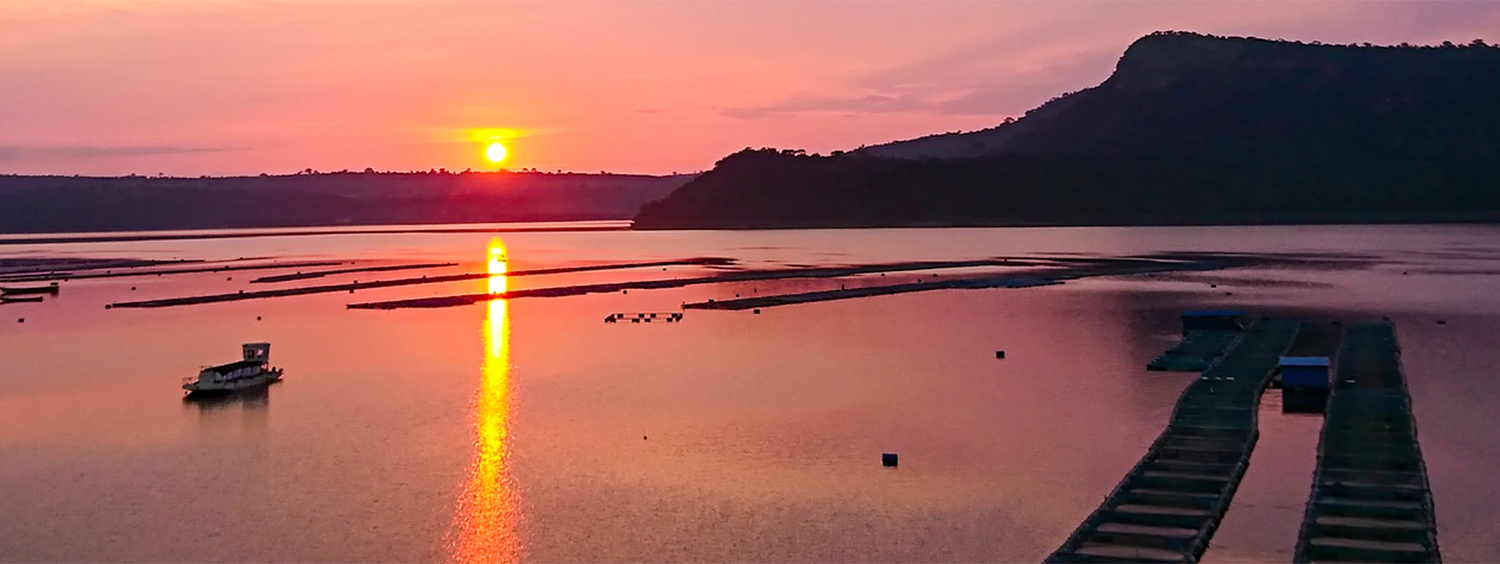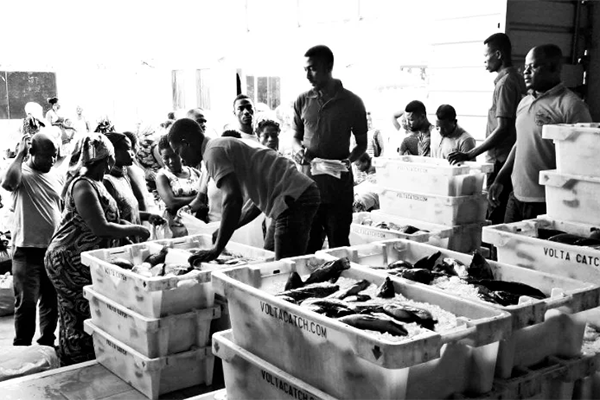CEO Francisco Murillo discusses how Tropo Farms is modernizing tilapia farming in sub-Saharan Africa

Over the past quarter-century and sometimes from afar, Francisco Murillo bore witness to the slow-paced progress of Africa’s freshwater aquaculture industry. With stints at leading-edge companies like Rainforest Aquaculture, Regal Springs Tilapia, Open Blue and Innovasea under his belt, he’s now in a position to inject some energy – and hopefully a lot of capital – into one of sub-Saharan Africa’s biggest tilapia farmers, Tropo Farms.
As the company’s CEO for the past two years, Murillo, who hails from Costa Rica, is seizing the opportunity to turn Volta Catch into the biggest brand of fish in the country. Tropo Farms’ ambitious growth plans include adopting a raft of new technologies, bringing in outside investors – a first for the company since its founding in the late 1990s – and doubling production from the current level of 12,000 metric tons per year.
By bringing in the well-connected Murillo as its chief executive, the company’s founder Mark Amechi sought to leave decades of “ups and downs” in reactionary fish production behind, according to Murillo, and instead look to modernize operations with new technologies and drive growth with the help of new investors who understand the company’s opportunity to take a lead position in a thriving seafood market.
It’s already paying dividends, as Tropo Farms was named Ghana’s “Aquaculture Farm of the Year” at the Aquaculture Ghana Exhibition earlier this year. But now is no time to be satisfied, Murillo told the Advocate late last month.

“We have a lot of room to grow. We have a lot of efficiencies to gain by using better technology. Other producers are looking at the same things and automating processes with technology: water quality sensors, fish counters, automatic feeders, automatic sorters, graders. Traditionally, the processes have been very manual, which is good news and bad news, as we employ a lot of people – but we need new technologies to be more efficient in what we do,” said Murillo. “I make the analogy that tilapia aquaculture in sub-Saharan Africa is where Latin American production of tilapia was 20 to 25 years ago: relatively small with a lot of room to grow, in both volume and technology.”
Murillo says he’s still close with companies near the top of his resumé, namely those in the Cuna del Mar portfolio, whose success he hopes to emulate. “I have great relationships with all of them,” he said.
Interestingly, he’ll be leaning on the experience he gained with Innovasea and Open Blue the most. Tropo Farms operates on the world’s largest human-made reservoir, Lake Volta, created in the mid-1960s. With its pens situated far from shore, Murillo says it’s essentially offshore aquaculture, which he is familiar with from his years in Panama.
“That’s really offshore, 12 kilometers out with 5-meter waves,” said Murillo regarding the cobia farms operated by Open Blue in Central America. “This is a lake. The waves are only 1 meter. We call it offshore because it gives us better water quality. Some prefer to grow the fish near the shore, so they can walk to the cages. But that has a lot of limitations, mainly on oxygen.”
That 100 percent of Tropo Farms’ tilapia sales are in the domestic market is not a limitation, as far as Murillo sees it. There are 33 million people in Ghana, and annual fish consumption is high, at about 25 kilograms per capita. And the domestic tilapia market is about 80 percent imports, even though it’s technically illegal to import tilapia.

“That doesn’t mean we don’t get illegal imports, frozen fish from China,” he said. “We’re competing with those products, but they are only ‘apparently’ cheaper. By the time you include the duties – it’s imported as something – the price is distorted due to glazing, 20 to 35 percent. Net weight, they are no longer as cheap as they looked originally.”
“But people here like fresh tilapia, good quality fish. That’s a barrier [for imports],” he said.
Growing an aquaculture business in Africa – one that emulates the production models proven in Western markets – has its challenges, such as transportation logistics, connectivity and training workers on how to use new, more sophisticated equipment. Tropo Farms could feasibly produce four times as much fish as it does today, as its concessions in Lake Volta allow for 50,000 MT of production.
“The question is more how much can we grow, or how much can the market allow us to grow? It’s more of a practical limit than a legal one,” said Murillo. The major obstacle to growing aquaculture production across sub-Saharan Africa is access to high-quality feed. But with two large feed producers in Ghana, as well as two medium-sized ones, Murillo said it’s a healthy and competitive situation right now. “It’s really not more difficult than in Latin America.”
Murillo spoke recently at the Blue Food Innovation Summit in London to showcase the company’s plans in front of a room of investors. Meetings held there “fulfilled their promise,” he said and should bear fruit in the coming months, with hopefully a “chunk of money to fund growth” heading the company’s way in the near term. Murillo said the company might have big news to announce in the coming months.
Follow the Advocate on Twitter @GSA_Advocate
Now that you've reached the end of the article ...
… please consider supporting GSA’s mission to advance responsible seafood practices through education, advocacy and third-party assurances. The Advocate aims to document the evolution of responsible seafood practices and share the expansive knowledge of our vast network of contributors.
By becoming a Global Seafood Alliance member, you’re ensuring that all of the pre-competitive work we do through member benefits, resources and events can continue. Individual membership costs just $50 a year.
Not a GSA member? Join us.
Author
-

James Wright
Editorial Manager
Global Seafood Alliance
Portsmouth, NH, USA[103,114,111,46,100,111,111,102,97,101,115,108,97,98,111,108,103,64,116,104,103,105,114,119,46,115,101,109,97,106]


